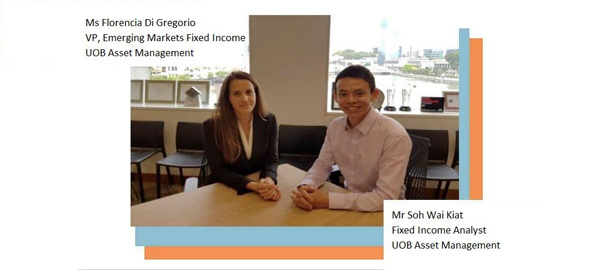Wai Kiat: Hello Florencia, in the previous interview, you shared basic key information about Asian Local Currency bonds and we are now more familiar with this asset class. For this publication, it'd be interesting to know how a portfolio manager makes investment decisions, focusing on the fundamentals (Why) and valuations (When) of such securities. But first, let's do a recap of what Asian LCY bonds are all about (What). What are we investing in when we invest in Asian LCY bonds and how is it different from investing in an Asian USD denominated bond portfolio?
Florencia: Asia LCY Bonds are fixed income investments where bonds are issued in the local currency of an Asian country such as the Thai Baht for Thailand, Indian Rupee for India, or Indonesian Rupiah for Indonesia, which is different from bonds issued in US dollars.
By investing in this asset class we can look at the returns in two parts – (1) the return on the bonds and (2) the currency returns. Asian LCY bonds offer steady income for investors with yields that are well above those in the developed countries, providing stability to returns. In addition, the currencies will appreciate or depreciate as the countries' fundamentals and relative monetary conditions change in relation to a reference currency (for instance, JPY for Japanese investors).








